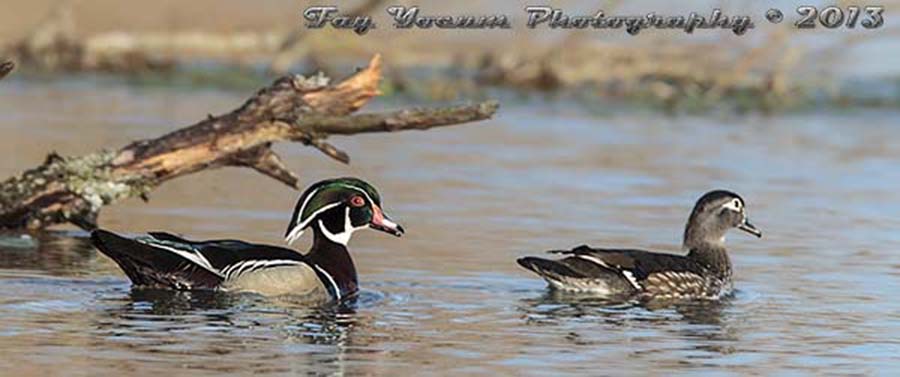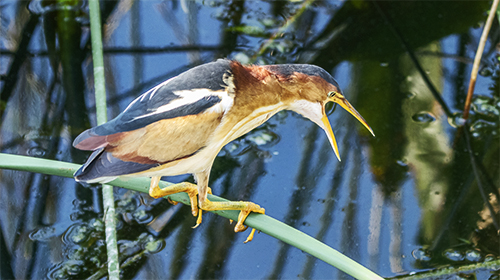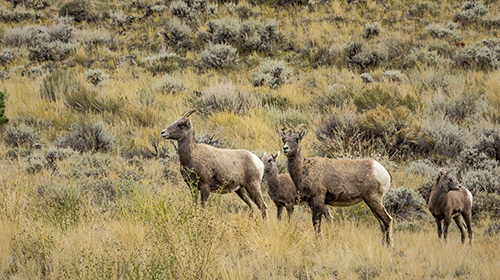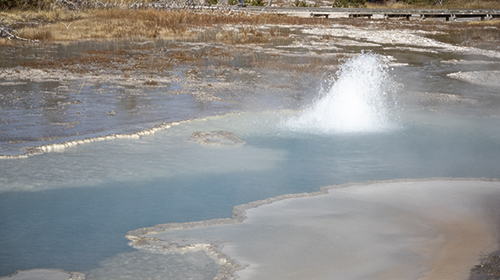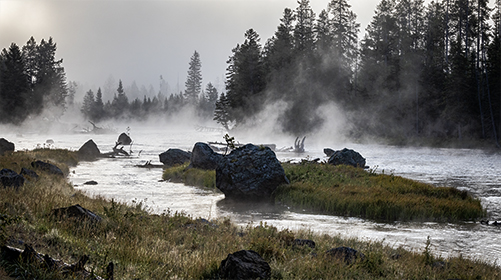American Wood Duck
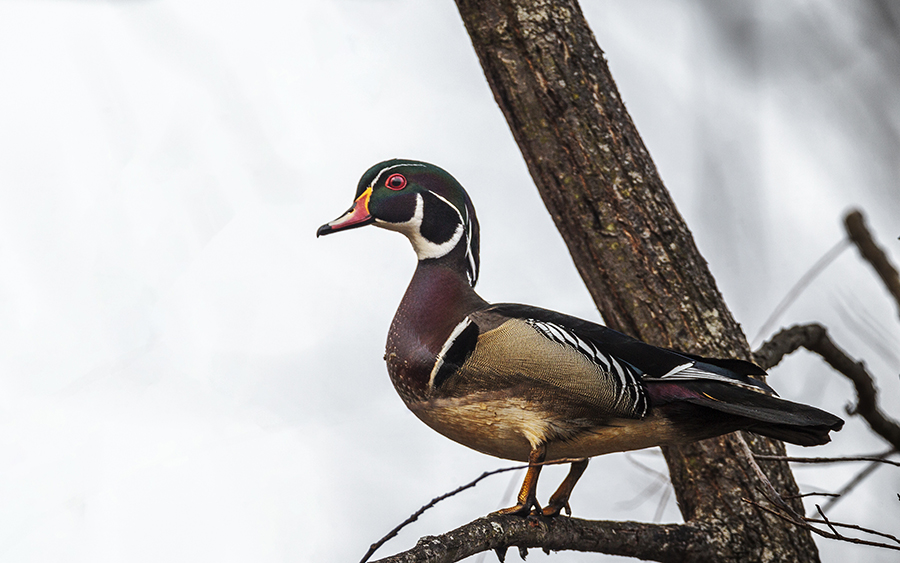
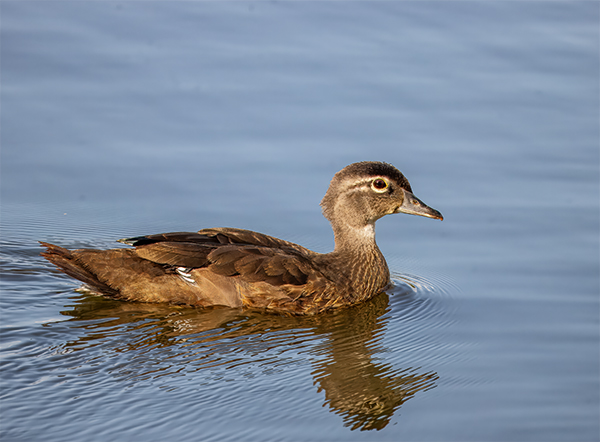
America's counterpart to the Chinese Mandarin duck is a beautiful duck called the American Wood Duck. Wood Ducks are also known as Woodies or Woodie since they like wooded areas. Though the drake is highly colorful, it can be hard to spot as it rests under overhanging branches. Look for it in beaver ponds, streams, marshes, swamps, and lakeshores, ponds with overhanging branches. When looking for this duck, look for the crest on the head, as seen in the image below.
To see the beautiful Mandarin Duck, go here.
Wood Ducks are dimorphic, meaning the males and females have different plumage. During the non-mating season, the drakes will have drab plumage but red eyes.
These ducks are one of a few waterfowl that perch in trees, hence their name. They have sharp nails on their webbed feet that allow them to balance on branches and maneuver into nesting cavities in trees.
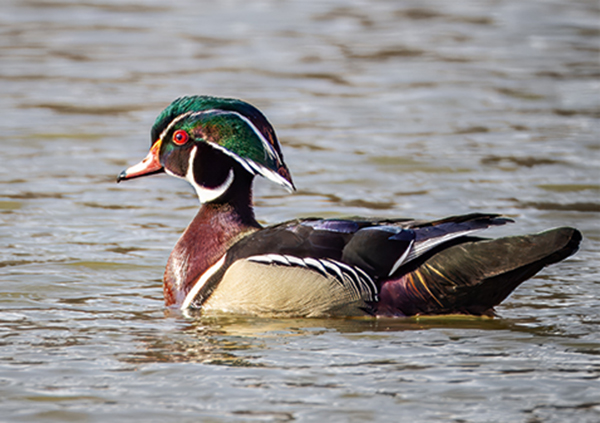
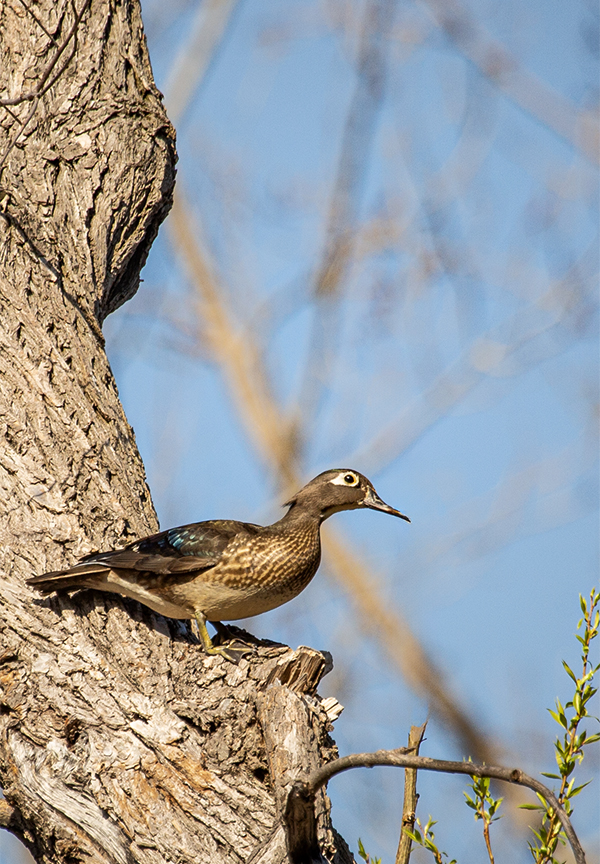
Early in our country's history, early settlers almost hunted this bird to extinction. With various remediation methods, its conservation status is of least concern.
Males and females are seasonally monogamous. They pair in late winter and breed in early spring. The pair builds the nest in tree cavities constructed by other birds since they do not have the ability to hollow out a hole in a tree. They also make their nest in nest boxes, usually in the water about 6 feet up in the air.
Mothers are responsible for incubating, raising, and protecting the chicks.
Mothers are responsible for incubating, raising, and protecting the chicks. A day after the last chick hatches, Mom leaves the nest. Then, she calls from below. The chicks climb up the nest and finally jump and float to the ground, which could be 50-60 feet or more in the air.
To see Wood Duck chicks leave the nest, check out this PBS clip.
